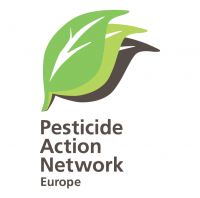Today, the Environment Committee of the European Parliament strongly challenged[1] the head of the pesticide unit from DG Sante and European Food Safety Authority’s (EFSA) head of pesticide unit for the untransparent and unscientific work they are carrying out to water down the protection of bees against pesticides in Europe.
In July, PAN Europe had uncovered[2] secretive discussions between the European Commission, the EFSA and EU Member States to radically weaken guidelines on the protection of bees against pesticides. These guidelines, published by the EFSA in 2013, were meant to correct the previous ones - which had led to the scandal of bee-killing neonicotinoids - and finally protect bees against pesticides, as foreseen by EU law.
Martin Dermine, environment policy officer at PAN Europe said: “Following pressure from agribusiness, Member States have been constantly blocking the guidelines from 2013, fearing that too many bee-toxic pesticides would have been withdrawn from the market. Over the past months, the EFSA came up with an alternative proposal to make use of a mathematical model (named ‘Beehave’) co-produced by Syngenta itself; this proposal was approved by EU Member States even though the model was not validated by the scientific community and is not proven to reproduce the reality of healthy honey bee colonies throughout Europe.”
Hans Muilerman, chemicals policy officer at PAN Europe said: “This is a major issue in chemical policies in Europe: industry keeps writing its own rules[3], and what we are witnessing here, shockingly, is the Commission and the EFSA pushing forward the agenda of the pesticides industry”.
“PAN Europe has been trying to understand how the proposal from industry would provide any increase in the protection of bees. We have contacted the EFSA, Member States’ experts and independent scientists and the conclusion is very clear: this approach is a black box and will definitely lead to a sharp decrease in bees’ protection. This is in complete contradiction with the ‘increased level of protection’ mentioned by DG Sante representative during the hearing”, Muilerman added.
Contrary to what Manuela Tiramani (EFSA) and Klaus Berend (DG Sante) told to Members of the European Parliament today, the process was untransparent and during months, stakeholders were not informed nor consulted on the new EFSA proposals that were discussed between DG Sante, EFSA and the Member States.
It is only under pressure by civil society, that the EFSA finally released some documents[4] last July and organised a meeting with stakeholders at the end of September 2020. In the stakeholders meeting, the EFSA defended the use of the Syngenta model and even claimed[5] it was normal to consider - as a baseline for a healthy honey bee colony - a colony that is already exposed to pesticides. Today, Ms Tiramani said the exact opposite to the Environment Committee.
“It is like defining a healthy person as a person with the health level of people you find in a hospital. EFSA’s approach is unscientific and is a scandal”, Muilerman concluded.
EU Member States’ public servants are meant to gather on the 8th of October to define what level of protection they are willing to afford to bees, while the final decision is expected to take place in the Standing Committee on phytopharmaceuticals that is expected to occur on 22/23 October.
Contact: PAN Europe, Martin Dermine, +32 486 32 99 92, martin [at] pan-europe.info
[1] https://multimedia.europarl.europa.eu/en/committee-on-environment-public...
[2] https://www.pan-europe.info/press-releases/2020/07/mourning-protection-p...
[3] https://www.pan-europe.info/press-releases/2018/02/industry-writing-its-...
[4] https://www.efsa.europa.eu/sites/default/files/topic/EFSA-Supporting-doc...
[5] https://www.pan-europe.info/sites/pan-europe.info/files/public/resources...
